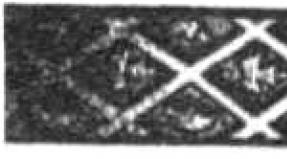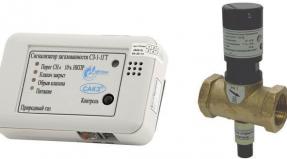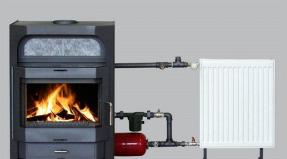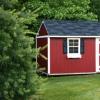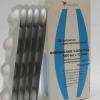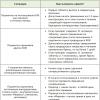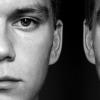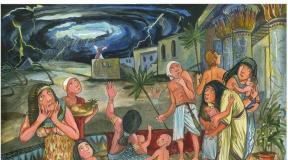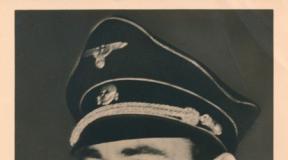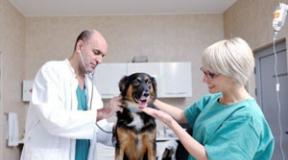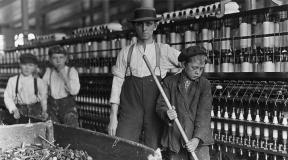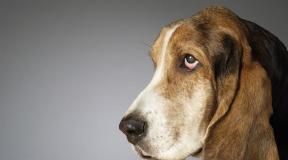The first cosmonaut who went into outer space Leonov. First spacewalk. advanced spacecraft
On March 18, 1965, the USSR pilot-cosmonaut Alexei Leonov, for the first time in history, made a spacewalk from the board of the Voskhod-2 spacecraft piloted by Pavel Belyaev.
On March 18, 1965, for the first time in the world, a man went out into open space. It was made by the USSR pilot-cosmonaut Alexei Leonov during a flight on the Voskhod-2 spacecraft (March 18-19, 1965), on which he was the co-pilot, and Pavel Belyaev was the commander.
To allow a person to exit into an open airless space, an airlock chamber (codenamed Volga) was additionally installed on the Voskhod multi-seat spacecraft, which had a cylindrical structure and consisted of 36 inflatable sections divided into three groups isolated from each other. The chamber retained its shape even if two of them failed.
The lock chamber communicated with the cabin with a hatch with a sealing cover, which opened inside the pressurized cabin both automatically using a special mechanism with an electric drive, and manually. The drive was controlled from the remote control.
A hatch in the upper part of the chamber, equipped with a sealing lid, which could also be opened both automatically and manually, was used to exit the astronaut into outer space. In the airlock were placed two cameras for filming the process of the astronaut entering and exiting the chamber, the lighting system, and the assemblies of the airlock system. Outside, a movie camera was installed for filming an astronaut in outer space, cylinders with a supply of air to pressurize the lock chamber, and cylinders with an emergency supply of oxygen.
The airlock was located outside the rigid hull of the spacecraft. When entering orbit in a folded form, it was placed under the fairing of the ship. In space, the camera inflated. And after the astronaut entered outer space, before descending to the earth, the main part of it was fired, and the ship entered the dense layers of the atmosphere almost in its usual form - having only a small build-up in the area of the entrance hatch. If for some reason the "shooting" of the camera had not taken place, then the crew would have to manually cut off the lock chamber that interferes with the descent to Earth. To do this, they had to put on spacesuits and, having depressurized the ship, lean out into the hatch.
To exit the ship into outer space, a special spacesuit "Berkut" was developed with a multi-layer hermetic shell, with the help of which excess pressure was maintained inside the spacesuit, ensuring the normal life of the astronaut. Outside, the spacesuit had a special white coating to protect the astronaut from the thermal effects of sunlight and from possible mechanical damage to the sealed part of the spacesuit. Both crew members were equipped with space suits so that the spacecraft commander could, if necessary, assist the astronaut who went into outer space.
In preparation for the flight, Belyaev and Leonov worked out all the actions and possible emergency situations during spacewalks during ground training, as well as in short-term weightlessness on board an aircraft flying along a parabolic trajectory.
On March 18, 1965, at 10:00 Moscow time, the Voskhod-2 spacecraft with cosmonauts Pavel Belyaev and Alexei Leonov successfully launched from the Baikonur cosmodrome. Immediately after the ascent into orbit, already at the end of the first orbit, the crew began to prepare for Leonov's spacewalk. Belyaev helped Leonov to put on the back of an individual life support system with oxygen supply.
The locking was controlled by the commander of the ship Belyaev from the control panel installed in the cockpit. If necessary, Leonov could control the main locking operations from a remote control installed in the lock chamber.
Belyaev filled the lock chamber with air and opened the hatch connecting the cabin of the ship with the lock chamber. Leonov "floated" into the lock chamber, the commander of the ship, having closed the hatch into the chamber, began its depressurization.
At 11 hours 28 minutes 13 seconds, at the beginning of the second orbit, the ship's lock chamber was completely depressurized. At 11:32:54 a.m., the airlock hatch opened, and at 11:34:51 a.m. Leonov left the airlock and entered outer space. The cosmonaut was connected to the spacecraft by a 5.35-meter-long halyard, which included a steel cable and electrical wires for transferring data of medical observations and technical measurements to the spacecraft, as well as for telephone communication with the spacecraft commander.
In outer space, Leonov began to carry out the observations and experiments envisaged by the program. He made five exits and approaches from the lock chamber, with the very first withdrawal made at a minimum distance - one meter - for orientation in new conditions, and the rest for the full length of the halyard. All this time, the "room" temperature was maintained in the spacesuit, and its outer surface was heated in the sun to +60°C and cooled in the shade to -100°C. Pavel Belyaev, using a television camera and telemetry, followed Leonov's work and was ready, if necessary, to provide the necessary assistance to him.
After performing a series of experiments, Alexei Leonov received a command to return, but this was not easy to do. Due to the pressure difference in space, the suit swelled up, lost its flexibility, and Leonov could not squeeze into the airlock hatch. He made several unsuccessful attempts. The supply of oxygen in the suit was designed for only 20 minutes, which ended. Then the astronaut depressurized the spacesuit to emergency pressure. If by this time he had not had nitrogen washed out of his blood, he would have boiled and Leonov would have died. The suit shrunk, and contrary to the instructions to enter the airlock with his feet, he squeezed into it headfirst. Having closed the outer hatch, Leonov began to turn around, since he still had to enter the ship with his feet due to the fact that the lid that opened inwards ate up 30% of the cabin volume. It was difficult to turn around, since the inner diameter of the airlock was one meter, and the width of the suit at the shoulders was 68 centimeters. With great difficulty, Leonov managed to do this, and he was able to enter the ship with his feet, as expected.
Alexei Leonov at 11:47 entered the ship's lock chamber. And at 11 hours 51 minutes 54 seconds, after the hatch was closed, the pressurization of the airlock began. Thus, the pilot-cosmonaut was out of the ship in outer space for 23 minutes 41 seconds. According to the provisions of the International Sports Code, the net time spent by a person in outer space is calculated from the moment he appears from the airlock chamber (from the edge of the exit hatch of the ship) to the entrance back into the chamber. Therefore, the time spent by Alexei Leonov in open space outside the spacecraft is considered to be 12 minutes 09 seconds.
With the help of the onboard television system, the process of Alexei Leonov's exit into outer space, his work outside the spacecraft and his return to the spacecraft were transmitted to Earth and observed by a network of ground stations.
After returning to Leonov's cabin, the cosmonauts continued to carry out the experiments planned by the flight program.
There were several more emergency situations in flight, which, fortunately, did not lead to a tragedy. One of these situations arose during the return: the system of automatic orientation to the Sun did not work, and therefore the braking propulsion system did not turn on in time. The cosmonauts were supposed to land in automatic mode on the seventeenth orbit, but due to the failure of the automation caused by the “shooting off” of the lock chamber, they had to go to the next, eighteenth orbit and land using the manual control system. This was the first manual landing, and during its implementation it was found that it was impossible to look into the porthole from the cosmonaut's working chair and assess the position of the ship in relation to the Earth. It was possible to start braking only while sitting in a seat in a fastened state. Due to this contingency, the accuracy required during the descent was lost. As a result, the cosmonauts landed on March 19 far from the calculated landing point, in the deep taiga, 180 kilometers northwest of Perm.
We did not find them right away, tall trees prevented the landing of helicopters. Therefore, the astronauts had to spend the night near the fire, using parachutes and spacesuits for insulation. The next day, in the undergrowth, a few kilometers from the place where the crew landed, a rescue party descended to clear the site for a small helicopter. A group of rescuers on skis reached the astronauts. Rescuers built a log hut, where they equipped sleeping places for the night. On March 21, the platform for receiving the helicopter was prepared, and on the same day the cosmonauts arrived in Perm aboard the Mi-4, from where they made an official report on the completion of the flight.
On October 20, 1965, the International Aviation Federation (FAI) approved the world record for the duration of a person's stay in outer space outside a spacecraft of 12 minutes 09 seconds, and the absolute record for the maximum flight altitude of the Voskhod-2 spacecraft above the Earth's surface - 497.7 kilometers. The FAI awarded Alexei Leonov the highest award - the Gold Medal "Cosmos" for the first spacewalk in the history of mankind, the USSR pilot-cosmonaut Pavel Belyaev was awarded a diploma and a medal from the FAI.
The first spacewalk was performed by Soviet cosmonauts 2.5 months earlier than the Americans. The first American in space was Edward White, who performed a spacewalk on June 3, 1965, during his flight on the Gemini 4 spacecraft (Gemini-4). The duration of stay in open space was 22 minutes.
Over the past years, the range of tasks solved by cosmonauts outside of spacecraft and stations has increased significantly. The modernization of space suits has been constantly carried out and is being carried out. As a result, the duration of a person's stay in space vacuum for one exit has increased many times over. Today, spacewalks are an obligatory part of the program of all expeditions to the International Space Station. During the exits, scientific research, repair work, the installation of new equipment on the outer surface of the station, the launch of small satellites, and much more are carried out.
Alexei Leonov was the first to step into outer space / Photo: rusevik.ru
On March 18, 1965, Soviet cosmonaut Alexei Arkhipovich Leonov made the first spacewalk in history. This mission was the most important stage in the development of astronautics. The whole country was following her!
Twice Hero of the Soviet Union, USSR pilot-cosmonaut Alexei Arkhipovich Leonov was born on May 30, 1934 in the village of Listvyanka, Kemerovo Region, in the family of a miner. After graduating from the Chuguev Military Pilot School, A. A. Leonov served in the aviation units of the USSR Air Force.
March 7, 1960 A. A. Leonov was enrolled in the first detachment of Soviet cosmonauts. In 1965, the State Commission approved Alexei Leonov as the co-pilot of the Voskhod-2 spacecraft. March 18, 1965 Voskhod-2 with cosmonauts Pavel Belyaev and Alexei Leonov successfully launched from the Baikonur cosmodrome. To perform a manned spacewalk, the Voskhod-2 ship was equipped with an airlock. For the astronaut, a special spacesuit was developed with a multilayer hermetic shell, with the help of which excess pressure was maintained inside the spacesuit, ensuring the normal life of the astronaut. Outside, the spacesuit had a special coating to protect the astronaut from the thermal effects of sunlight. Both crew members were equipped with spacesuits so that the spacecraft commander could, if necessary, assist the astronaut who went into outer space.
March 18, 1965 at 11:30 a.m. Moscow time Alexei Arkhipovich Leonov made the world's first spacewalk. The time of the astronaut's stay outside the spacecraft (from the moment of exit from the airlock to the entrance to it) was 12 minutes. 09 sec. Departure from the ship was carried out at a distance of up to 5.35 meters, for the full length of the halyard. Free floating in space was carried out during several departures and approaches to the ship. During this time, the cosmonaut made observations and video footage.
During the flight of the Voskhod-2 spacecraft, emergency situations repeatedly arose on board and while A. A. Leonov was in open space. Due to the increase in pressure in the spacesuit, the astronaut had difficulty returning to the spacecraft. Due to the failure of the automatic descent control system, the landing of the ship was carried out in manual mode for the first time.

First spacewalk / Drawing: Alexey Leonov
On October 20, 1965, the FAI (International Aviation Federation) approved the world record for the duration of a person's stay in outer space outside a spacecraft of 12 minutes. 9 sec., and the absolute record for the maximum flight altitude above the Earth's surface of the Voskhod-2 spacecraft is 497.7 km. The International Aviation Federation awarded Alexei Leonov the highest award - the Cosmos Gold Medal for the first spacewalk in the history of mankind, the USSR pilot-cosmonaut P.I. Belyaev was awarded a diploma and a medal from the FAI.
On March 18, 1965, our country entered another milestone in space exploration. The two-seat Voskhod-2 spacecraft was launched into the Earth's orbit, which had the task of conducting a new experiment for mankind - a man's exit into outer space. This event was followed by the whole country. Cosmonaut Aleksei Leonov was outside the Voskhod-2 spacecraft for only 12 minutes, but those minutes were forever included in astronautics.
The brave Soviet cosmonaut, getting out of the hatch of the Voskhod-2 spacecraft, took a step into history. It easily separated from the ship and swam to the side for the length of its tether, which was connected to the spacecraft. Before returning back to the ship, the cosmonaut removed the movie camera from the bracket, wrapped a halyard around his hand and entered the airlock. Especially for the spacewalk, specialists from NPO Zvezda developed the Berkut spacesuit. And the spacewalk training itself was carried out on board the Tu-104 aircraft, in which a life-size model of the Voskhod-2 spacecraft was installed. Some time later, the Americans also made their spacewalk, but this happened already on June 3, 1965, so the Soviet cosmonaut Alexei Leonov forever remained the first person to go into outer space.
On March 18, 1965, the first space walk in the history of mankind caused a real shock and delight in the world. It is important to understand that this happened at a time when the US and the USSR were in a very intense competition for supremacy in the field of space exploration. The flight of the Voskhod-2 spacecraft was regarded at that moment as a very serious propaganda success for the country of the Soviets, and also as a blow to the national pride of the Americans.
Suit "Berkut"
It is clear that for a person to survive in a vacuum, special clothes were needed, the development of which was undertaken by the NPO Zvezda. On their first flights, Soviet cosmonauts went in SK-1 rescue suits, which weighed only 30 kg. They were equipped with autonomous oxygen supply in case of a possible accident, and also had positive buoyancy - in case the astronauts would have to splash down instead of landing. However, for spacewalking and active work, fundamentally different “suits” were needed, which would have protection from solar radiation and cosmic cold, a thermoregulation system, and a powerful life support system.
Especially for going into space, the Berkut spacesuit was created, it differed significantly from the model in which the astronauts flew on the Vostoks. To increase its reliability, an additional reserve hermetic shell was introduced into the composition of the suit. The top overalls were sewn from a special metallized multilayer fabric - screen-vacuum insulation. In fact, the suit was a thermos, which consisted of several layers of plastic film coated with aluminum. A special gasket made of screen-vacuum insulation was also installed in shoes and gloves. Outdoor clothing was supposed to protect the astronaut from possible mechanical damage to the sealed part of the spacesuit, since such clothing was made of very durable artificial fabrics that were not afraid of low and high temperatures. At the same time, the suit became significantly heavier, and a new life support system added weight to it. This system was located in a special knapsack and, in addition to the ventilation system, also included two oxygen cylinders, two liters each. A fitting for filling them and a pressure gauge window were fixed on the body of the knapsack, designed to control pressure. In case of an emergency, there was a backup oxygen system in the lock chamber, which was connected to the suit with a hose.
The total weight of the new suit was close to 100 kg. Therefore, during terrestrial training, the astronauts had to ride in a kind of “runner”, which supported the rigid part of the spacesuit. However, under weightless conditions, the weight of the suit did not play any significant role. Significantly more interference was created by air pressure, which filled the hermetic shell, making the suit unyielding and rigid. The astronauts had to overcome the resistance of their own vestments with noticeable effort. Later, cosmonaut Alexei Leonov recalled: "For example, to squeeze a hand in a glove, a force of 25 kg was needed." It is for this reason that great attention was paid to physical fitness during the preparation of astronauts for flight. Every day, Soviet cosmonauts ran cross-country skis or cross-country skis, intensively engaged in weightlifting and gymnastics.

The color of the suit has also changed. "Berkut", in order to better reflect the sun's rays, was made white, not orange. A special light filter appeared on his helmet, which was supposed to protect the astronaut's eyes from bright sunlight. The created suit became a real miracle of technology. According to the firm conviction of its creators, it was a product more complex than a car.
Voskhod-2 spacecraft
After the first successful flight into space of the multi-seat Voskhod-1 spacecraft, the following goal was set in the USSR - the implementation of a manned spacewalk. This event was to be a significant milestone in the Soviet lunar program. To prepare for this mission, the new Voskhod 2 spacecraft was modified from Voskhod 1.
The Voskhod-1 spacecraft had a crew of 3 cosmonauts. At the same time, the cabin of the ship was so cramped that they were on board without spacesuits. In the ship "Voskhod-2" the number of seats was reduced to two. At the same time, a special lock chamber "Volga" appeared on the ship. During the launch, this lock chamber was in the folded state. In this state, the dimensions of the chamber were: diameter - 70 cm, length - 77 cm. The lock chamber weighed 250 kg. In space, the airlock inflated. The dimensions of the chamber in the inflated state were: length - 2.5 meters, outer diameter - 1.2 meters, inner diameter - 1 meter. Before the spacecraft deorbited and landed, the lock chamber fired from the spacecraft.

Since the Voskhod-2 ship was designed for two people, in addition to Leonov, there should have been one more cosmonaut on it. One person was a navigator (he also went into outer space), the second was a commander who piloted the ship. Alexei Leonov was able to ensure that his friend Pavel Belyaev took the place of commander on his ship. Belyaev was 10 years older than his friend and met the end of World War II in the Far East in the cockpit of a fighter jet, flying sorties against Japanese troops. He was a skilled and brave pilot. Leonov was able to achieve his appointment even though the doctors were very worried about the leg injury that Pavel Belyaev received while performing a parachute jump.
Alexey Leonov
Alexei Leonov was born in 1934 in the tiny village of Listvyanka, located in Western Siberia (Kemerovo region). When he was 3 years old, his father was repressed. The Leonovs were branded as enemies of the people, while the authorities turned a blind eye to the fact that their neighbors looted their property. However, Alexey is always reluctant to recall these events. Already in childhood, the boy discovered the talent of an artist in himself, but nevertheless decided to go the other way. He successfully graduated from military school and became a fighter pilot.
Shortly after graduating from college, Alexei received an offer to try his hand at a competition for a cosmonaut corps. Leonov managed to get a place in the detachment, he became one of its twenty members, among whom was Yuri Gagarin, who made the first flight into space in 1961.
At that time, no one knew how the human body would react to a spacewalk. For this reason, all Soviet cosmonauts were subjected to very intense training. The ongoing tests were to show how far it would be possible to push the mental and physical limits of the capabilities of the human body. Later, Alexei Leonov recalled: “The astronaut had to be physically prepared. Every day I ran at least 5 kilometers and swam 700 meters.

At one time, the cosmonaut training center banned the game of hockey. This happened after several people were injured during this game. In return, the astronauts were offered volleyball, basketball and football. Flights into space subjected the human body to high overloads. Therefore, during training, the candidates rotated in centrifuges - sometimes this led to loss of consciousness. Also, future cosmonauts were locked in a sound chamber or pressure chamber in conditions of prolonged loneliness. Such experiments were dangerous, since a fire could start in the oxygen-rich atmosphere of the chamber.
And such an accident really happened in 1961. Then, during a training session in a pressure chamber, Valentin Bondarenko accidentally dropped a cotton swab with alcohol on a closed spiral of a hot electric stove. As a result, the fireball literally swallowed him up. Bondarenko died a few hours later in the hospital from severe burns. After this incident, engineers began to use ordinary air during training. So the path to space was not only thorny and difficult, but also fraught with real dangers to life.
Spacewalk
Even the spacewalk itself could have ended tragically for Alexei Leonov, but then everything worked out, although a sufficient number of emergency situations were recorded during the flight. In the days of the USSR, they simply kept silent about this, the truth surfaced relatively recently. Troubles haunted the Voskhod-2 crew both during the spacewalk and at the time of landing, but in the end everything ended well, and Alexei Leonov is alive to this day, the famous Soviet cosmonaut turned 80 on May 30, 2014.

At that moment, when Alexei Leonov climbed out of his spaceship on March 18, 1965 and saw himself at an altitude of 500 kilometers above the surface of our planet, he did not feel movement at all. Although in fact he was rushing around the Earth at a speed that was many times higher than the speed of a jet aircraft. A panorama of our planet that no one had seen before opened before Alexei - like a giant canvas, which was saturated with contrasting textures and colors, alive and bright. Alexey Leonov will forever remain the first person who was able to see the Earth in all its splendor.
The Soviet cosmonaut at that moment simply took his breath away: “It’s hard to even imagine what it was. Only in space can one feel the greatness and gigantic dimensions of the human environment - you will not feel this on Earth. Five times the cosmonaut flew away from the Voskhod-2 spacecraft and returned to it again. All this time, "room" temperature was successfully maintained in his spacesuit, while the working surface of the "Berkut" either warmed up in the sun to +60 ° C, then cooled in the shade to -100 ° C.
At that moment, when Alexei Leonov saw the Yenisei and the Irtysh, he received a command from the commander of the ship Belyaev to return back. But Leonov did not manage to do this for a very long time. It turned out that his spacesuit in a vacuum was greatly swollen. So much so that the astronaut simply could not squeeze into the hatch of the airlock, and there was no time to consult with the Earth about this situation. Leonov made attempt after attempt, but they all ended in vain, and the supply of oxygen in the spacesuit was only enough for 20 minutes, which inexorably melted away (the astronaut spent 12 minutes in space). In the end, Alexei Leonov decided to simply relieve pressure in his spacesuit and, contrary to the instructions issued, instructing him to enter the airlock with his feet, he decided to "swim" into it face first. Fortunately, he succeeded. And although Leonov spent only 12 minutes in outer space, during this time he managed to get wet as if a whole tub of water had been poured on him - the physical load was so great.
Solemn meeting of the crew members of the Voskhod-2 spacecraft - Pavel Belyaev (left) and Alexei Leonov, 1965
The second unpleasant situation occurred already at the exit from orbit. The crew of Voskhod-2 could have been the first crew to die while returning from orbit. During the descent to Earth, there was a problem with the detachable service module on board, which led to the rotation of the capsule with the astronauts, who experienced very strong overloads. The tumbling stopped only when the cable connecting this module completely burned out, and the capsule with the astronauts turned out to be free.
The second error crept into the calculations of the MCC engineers, as a result of which the capsule with the astronauts landed hundreds of kilometers from the calculated point. The astronauts ended up in the remote Siberian taiga. Only 7 hours after landing, a monitoring station in West Germany reported that it had detected a coded signal sent by the astronauts. As a result, the astronauts spent the night in the forest, waiting for rescuers. They had to leave the taiga on skis, but already there, on the “mainland”, they were greeted as real heroes and conquerors of space.
Sources of information:
http://www.vokrugsveta.ru/vs/article/598
http://www.bbc.co.uk/news/special/2014/newsspec_9531/index.html
http://www.calend.ru/event/5984
http://www.sgvavia.ru/forum/95-4980-1
“When flying in space, it is impossible not to go into space ... An astronaut must be able to carry out the necessary repair and production work in interstellar space ... This is not a fantasy - this is a necessity. The more humanity goes into space, the more this need will be felt.”
These words, spoken at the very beginning of the space age by Korolev, became truly prophetic. In less than fifty years of "extravehicular activity", dozens of people have been in outer space, and the duration of a person's stay in one exit has increased from several minutes to several hours. The creation and maintenance of the ISS in general would be impossible without long-term spacewalks and a gigantic amount of repair and installation operations. However, the first step on this path was taken on March 18, 1965. It was on this day that the Soviet pilot-cosmonaut Alexei Arkhipovich Leonov was the first of earthlings to leave the spacecraft. He stayed in space for only 12 minutes 9 seconds, but in the matter of mastering the Universe, this event rightfully took second place after the legendary flight of Gagarin.
Alexey Arkhipovich was born on May 30, 1934 in a small village called Listvyanka, located six hundred kilometers north of the city of Kemerovo. His grandfather lived in this place for a long time, exiled by the tsarist government after the revolution of 1905, Alexei's parents came here from the Donbass - first his mother, and after the Civil War ended, father - Leonov Arkhip Alekseevich. Mother, Evdokia Minaevna, worked as a village teacher, father, a Donetsk miner in the past, got a job as chairman of the village council. Alexei was their ninth child.
In 1936, a denunciation was written against Arkhip Alekseevich. Under the article “enemy of the people”, without trial or investigation, he was sent to a Siberian camp, and his mother with eight children (one of Leonov’s sisters, Vera, died in infancy) and the ninth in position were expelled from home with confiscation of all property. The children were also expelled from school. The future cosmonaut said: “At that time, my older sister lived in Kemerovo and worked on the construction of a thermal power plant. There she married a boy from Mogilev - he also worked at a construction site and studied at a technical school. They had a room in the barracks. In a thirty-degree frost, my sister's husband came for us in a sledge, spread out a sheepskin coat, put eight of us and covered it with a sheepskin coat from above .... So we found ourselves in the Kemerovo barracks - eleven people in a sixteen-meter room. The guy was 22 years old - a simple worker, a student, he sheltered the family of an enemy of the people. Well, what courage it was necessary to have ... ". In 1939, Arkhip Alekseevich was rehabilitated and returned home. The Leonov family slowly began to rise to its feet. And soon a decree was issued to support mothers of large families. All in the same barracks they were given two rooms - sixteen and eighteen square meters.
In 1943, Alexei Arkhipovich went to elementary school No. 35. Among the main hobbies of young Alexei at that time was the painting of old Russian stoves, which he learned from immigrants from Ukraine who lived in the neighborhood. Once, while already at school, Leonov saw a book with black-and-white illustrations of Aivazovsky's paintings from his classmate and was eager to purchase it. It cost him very dearly - in payment, Alexei had to give 50 grams of bread and a piece of sugar given to him every day at school for a month. Since then, Aivazovsky has become his favorite artist.
In 1947, the Leonov family moved to a new place - to the city of Kaliningrad. Here, in 1953, Alexei graduated from high school No. 21, having received his matriculation certificate. By that time, he was already very fond of flying, knew famous aviators by heart, reviewed all the films about pilots, and independently made aircraft models. According to the notes of his older brother Peter, who was an aviation technician, Alexei Arkhipovich studied the basics of flight theory, aircraft engines and aircraft designs with enviable persistence. In combination with outstanding sporting achievements, this was the key that opened the doors of the flight school for the guy. In August 1953, Leonov was enrolled in the tenth Military Aviation School for Initial Pilot Training, located in the city of Kremenchug (Poltava Region), which he successfully completed in 1955. In connection with the displayed outstanding abilities, he was sent to Ukraine in the city of Chuguev to the Higher Military School of Fighter Pilots. And from 1957 to 1959, Alexey served in the 69th Air Army of the 10th Guards Division, located on the territory of Ukraine.
At the end of the summer of 1959, Colonel Karpov, the future head of the Cosmonaut Training Center, arrived in Leonov's division. He invited several pilots to talk to him, including Alexei Arkhipovich. By the way, the day before, the aviator had a serious accident that happened due to the failure of the hydraulic system of the MiG-15bis fighter. Oil flooded the alternator, and the entire group of navigational instruments turned off. With difficulty finding his bearings, Leonov immediately sent the plane to the airfield. When he had already passed the long-range drive, the "Fire" indicator lit up and the siren started working. Leonov knew that in such a situation it was necessary to eject, but at an altitude of two hundred meters it was pure suicide. The pilot was landing, well aware that an explosion could occur at any moment. On the near drive, he cut off the fuel supply and sat down with the engine turned off. Aleksey Arkhipovich did not reach the runway about three hundred meters, but he taxied onto it and stopped. As a result, the aircraft did not receive any damage, and, as it turned out, there was no fire at all - the indication worked because the oil was sucked into the compressor.
At the meeting, Colonel Karpov, without explaining his intentions, inquired about Leonov's health and his plans for the future. Alexey Arkhipovich noted that he is completely healthy and thinks to continue flying. Then the colonel invited him to enter the school of test pilots. The call came on October 2, 1959, and two days later Leonov had already arrived in Sokolniki at the Aviation Hospital (TsVNIAG) for a medical examination. There he first saw Yuri Gagarin: “I went into the ward and found that I was not alone - a man of my age was sitting on a stool, naked to the waist, and reading. What struck me most was that he was reading… Hemingway's The Old Man and the Sea. In 1959, even among the reader's elite, few people knew about this writer, but here the pilot .... He looked at me with big smiling blue eyes and introduced himself: "Senior Lieutenant Yuri Gagarin." After a short time, the pilots became close friends. Already after the death of the first cosmonaut, Leonov said: “He did not stand out in any way, but it was still impossible to pass him by - you get up and look. Ordinary speech, classical Russian, understandable and memorable. Only later did I realize what an extraordinary person he was - he grasped everything on the fly, had an amazing system analysis, was obligatory, hardworking, devoted to friendship ... ".
Numerous, often exhausting examinations were carried out in the hospital above Leonov. Alexey Arkhipovich said: “From my point of view, a lot of stupid things were made during the examination. Among the doctors there were people engaged in scientific work and taking astronauts as material for their dissertations. Because of all the nonsense, which was then canceled, we lost a lot of talented guys .... If we apply the old medical requirements to the latest recruitment into the cosmonaut corps, then probably not a single person would have passed .... After I became the leader, I reviewed a lot with the same doctors, relaxed the requirements.
Despite everything, in 1960 Leonov was accepted into the first cosmonaut corps. Months of hard training dragged on in order to prepare for the upcoming flights, during which the participants continued to be subjected to various medical experiments, often unnecessarily cruel: “Maneuvers in the centrifuge were accompanied by very high Gs, reaching 14g. It's a crazy load. There were hemorrhages on the back after such trainings, there were hemorrhages both inside and on the soft tissues. In general, all this did not add health. During one of these tests, Alexei Arkhipovich was placed in a depressurization chamber for fifteen days. Sensors were glued to his body with the help of an unknown paste for electrical conductivity. Further, in the words of the astronaut: “I wake up on the tenth day and see that the whole sheet is covered in blood. I look, and a couple of sensors fell off and with them rags of my skin. There was no epidermis left in the places where they were glued - only muscles twitching in the rhythm of the heartbeat. These places healed for two months. I cut off the rest of the zinc sensors and put them on a shelf so that after the experience I could show who needed it .... But on the thirteenth day, oxygen began to run out, the experiment was stopped, and I was taken out of there. When I returned to the cell for the sensors, they were no longer there…. There was no physical evidence. The same public later burned Bondarenko…”.
Another incident occurred during the casting of the lodgment of the astronaut's chair. During this operation, Leonov had to lie naked in a trough, which was then filled with liquid plaster with a temperature of about 10 degrees. He lay in this icy sour cream, which gradually hardened and heated up. The most important thing was not to miss the moment when the plaster began to harden. And it was with him that this moment was missed: “And they began to pick me out. And here every hair is an anchor. It doesn’t work out at all, then they rushed - and pieces of skin remained in pieces of gypsum along with hair. ”
In 1963, after six single-seat spacecraft of the Vostok type (including Vostok 6 with Valentina Tereshkova) had orbited the planet, the design bureau, headed by Korolev, began designing a new spacecraft of the same series, but designed for three seats. Simultaneously with the preparation of the flight (which was successfully completed in October 1964 by Komarov, Feoktistov and Egorov), it was decided to create a two-seat spacecraft based on the new design of the Voskhod, allowing a person to go into airless space. The place vacated after the dismantling of the third chair was used as a platform for putting on a spacesuit, as well as an entrance to the airlock.
By the way, initially it was supposed to conduct experiments with animals. After the depressurization of the box, the beast in it and dressed in a spacesuit had to make an independent exit (or it was intended to move it out) from the spacecraft with a mandatory subsequent return for research. However, this step was rejected. First, there were issues of developing a special space suit for the animal. Secondly, such an experiment did not answer the main question: is it a person who is able to move and navigate in such an unusual environment.
As a result of consideration of various technical solutions, the choice was given to the use of a lock chamber, which is a small space isolated from all sides. The astronaut, dressed in a spacesuit, was supposed to be in it until all the air surrounding him was released. After that, he will be able to open the hatch leading outside. The return to the ship took place in the reverse order - the lock chamber, closed from the outside and from the inside, was gradually filled with air, after which the inner hatch opened, and the astronaut got into the cabin of the ship. The lock chamber itself was inflatable, located outside the body of the aircraft. During entry into orbit, it was placed under the fairing in a folded form, and before descending to Earth, its main part was shot back, and the spacecraft reached the dense layers of the atmosphere in its usual form, except for a small build-up in the area of the entrance hatch. The tests carried out showed that the ballistics of the compartment was not affected.
In parallel with the changes to the Voskhod spacecraft, two cosmonaut crews were undergoing flight training: Pavel Belyaev with Alexei Leonov and their backups, Viktor Gorbatko and Yevgeny Khrunov. It is curious that when selecting the crew, not only the tasks and goals of the flight, its complexity and duration, but also the psychological, individual characteristics of the astronauts, presented by psychologists, were taken into account. The crew of the Voskhod 2 spacecraft had special requirements in terms of coherence and harmony. It was assumed that such a difficult task as getting out of the ship's cabin into outer space through an airlock chamber could be solved only with complete trust, mutual understanding and faith in each other. In accordance with the research of psychologists, Belyaev was characterized as a strong-willed and self-possessed person who did not panic even in the most difficult situations, showing great perseverance and logical thinking in achieving his goals. Leonov, in turn, belonged to the choleric type, was impulsive, bold, resolute, and easily developed vigorous activity. In addition, his artistic gift was noted, the ability to quickly memorize the pictures presented to his gaze, and then reproduce them very accurately. These two people, having different characters, perfectly complemented each other, creating, according to psychologists, a “highly compatible group” capable of successfully completing the task assigned to them and compiling a detailed account of all the problems and surprises associated with being in space.
To go into space, a special spacesuit was also created, called the Berkut. Unlike the spacesuits used on the Vostoks, it had an additional hermetic shell that increased overall reliability. Being, in fact, a thermos, it consisted of layers of plastic film coated with aluminum. The top overalls were sewn from multi-layered metallized fabric. The suit became much heavier - the life support system placed in the back pack and including a ventilation system and two two-liter oxygen cylinders added weight. In addition, a reserve oxygen system was installed in the airlock, just in case, connected with a hose to the spacesuit. The color of the suit has also changed - to better reflect the sun's rays, the orange color was changed to white, and a light filter was installed on the helmet. Alexei Arkhipovich recalled: “In December 1963, we visited the Korolev Experimental Design Bureau. Sergei Pavlovich met us, led us to the workshop and showed us a model of Voskhod, equipped with some kind of unusual camera. Seeing our surprise, he explained that this was a gateway for access to outer space. Then Sergei Pavlovich asked me to put on a new spacesuit and try to perform a series of experiments. After two hours of work, during which I had to work hard, I again met with Korolev. I remember telling him that the task can be completed, you just need to think everything through well.
The total weight of the “exit suit” was about 100 kilograms, but in zero gravity this did not play a significant role. Problems were created by the pressure of the air, which filled the hermetic shell and made the suit unyielding and rigid. The astronauts had to overcome the resistance of their vestments with great effort. Aleksey Arkhipovich recalled: “Only to squeeze a hand in a glove, it was necessary to apply an effort of 25 kilograms.” In this regard, during the preparation for the flight, special importance was attached to physical fitness - the cosmonauts performed daily jogging, intensively engaged in weightlifting and gymnastics. In addition, the complex of trainings for more perfect control of one's body included jumping into the water, classes on a trampoline, parachute descents, and exercises on the rotating "Zhukovsky bench". Conditions for short-term real weightlessness were also created for the astronauts - in an airplane flying along a special trajectory. Leonov said: “In the huge cabin of the TU-104, a mock-up of the Voskhod 2 cockpit was mounted, which has a full-size airlock. The plane dived down, accelerated and went up steeply, performing a “slide”, during which weightlessness set in. Its “quality” depended entirely on the skill of the pilots, who, relying only on the data of their vestibular apparatus, made the plane fly exactly in a parabola. With each such maneuver, weightlessness lasted a little more than twenty seconds. For an hour and a half of flight, five such "slides" were made, gaining a total of two minutes of weightlessness .... Many times we took to the air, step by step in these short periods of time, honing all the details of entering the cabin of the ship and exiting the airlock.
Interestingly, in those years there were many scientific theories about human behavior in outer space. Some experts quite seriously argued that the astronaut would inevitably "weld" to the spacecraft. Such fears were based on cold welding experiments carried out in vacuum. Other scientific luminaries believed that a person, having lost his usual support, would not be able to make a single movement overboard the ship. Still others believed that the boundless space would have an extremely negative impact on the psyche of the astronaut .... In fact, no one, including the Chief Designer, knew exactly how the cosmos would meet a person. The daredevils, who dared to leave the cozy surface of the earth, could only rely on themselves and the equipment that flew away with them. There were no rescue systems yet - it was impossible to dock or get out of one ship and through the airless space to go to another. Korolev told the astronauts: "It will be difficult - make your own decision depending on the situation." The crew, as a last resort, were allowed to limit themselves to opening the hatch and putting their hands overboard.
On March 18, 1965, after a three-year preparation, the Voskhod 2 spacecraft with Alexei Leonov and Pavel Belyaev successfully launched from Baikonur. After entering orbit, already at the end of the first orbit, Alexei Arkhipovich began to prepare for a spacewalk. Belyaev helped him with a life-support system pack and then filled the airlock with air. When Leonov moved into the lock chamber, Pavel Ivanovich closed the hatch behind him and depressurized the chamber. There was only one last step... Gently pushing off, Alexei Leonov "floated" out of the airlock. Once in space, he carefully moved his legs and arms - the movements were performed easily, and then, spreading his arms to the sides, he began to soar in an airless space, connected to the ship by a five-meter halyard. During the flight over the Volga, Pavel Ivanovich connected the phone in the cosmonaut's space suit to the broadcast of Moscow radio - at this time Levitan read out the TASS message about the first manned spacewalk. From the ship, Leonov was monitored by a pair of television cameras, in addition, he himself filmed using a portable camera. Based on these materials, a film has already been mounted on Earth. The astronaut also had at his disposal a miniature camera of the Ajax series, capable of taking pictures through a button. It was provided to the crew of the Voskhod 2 ship with the permission of the KGB chairman. This camera was controlled remotely using a cable, however, due to the resulting deformations of the suit, Leonov could not reach it.
Five times Alexei Arkhipovich flew off and returned to the ship. All this time, the spacesuit was maintained at “room” temperature, and this despite the fact that its outer surface in the shade was cooled to -100 ° C, and warmed up to + 60 ° C in the sun. When Alexei Arkhipovich saw the Yenisei and the Irtysh, Belyaev gave the command to return. However, it turned out to be not so easy to do this - in a vacuum, the astronaut's spacesuit swelled up. He himself described what happened as follows: “The pressure in the spacesuit reached 600 mm, outside 10. It was impossible to simulate such conditions on Earth. Neither the dense fabric nor the stiffening ribs could withstand - the spacesuit was so swollen that the legs came out of the boots, and the hands - out of the gloves. Of course, we assumed that this would happen, but we did not think that it would be so much. A critical situation arose: Leonov, in this state, could not get into the airlock hatch, and there was no time left for talking with the Earth - the oxygen supply was calculated for 20 minutes. Belyaev was aware of everything, but could not help in any way. And then Alexei Arkhipovich, violating all the instructions, independently relieved pressure in the spacesuit and “floated” into the airlock with his face (and not his feet, as expected) forward.
Unfortunately, the emergencies didn't end there. After the astronaut returned to the ship, despite the fact that the closing sensors had worked, the hatch cover was not closed tightly enough. Due to the constant etching of air from the ship, the regeneration system, working out its program, began to build up pressure. Soon the oxygen level in the cabin rose above the critical level. The astronauts did everything that depended on them - they removed the humidity, lowered the temperature to 10 ° C, but they could not determine the cause of the malfunction and earned oxygen poisoning. When the total pressure reached the mark of 920 mm, the hatch fell into place. Shortly thereafter, the oxygen pressure in the ship's cabin returned to normal.
According to the plan, the descent of Voskhod 2 was supposed to be carried out in automatic mode, but before that it was necessary to disconnect the airlock chamber. Strapped in, Leonov and Belyaev performed the necessary actions, but a strong blow at the time of shooting spun the spacecraft in two planes. This, in turn, led to off-design angular accelerations and failure of the attitude control and auto-stabilization systems. At that moment, Voskhod 2 was over Australia, and the astronauts had no connection with the Center. After consulting, they decided to turn off the self-timer system and land the ship in manual mode. Up to this point, no one has ever landed in manual mode. After the astronauts began to perform orientation, communication was restored, and the crew requested permission to land in manual mode. Gagarin himself answered them after some time, saying that permission had been given. It is curious that the sight, through which it was possible to carry out orientation, was at an angle of 90 degrees with respect to the seated astronauts, forcing them to control the spacecraft by turning sideways. One of the cosmonauts, in violation of all instructions, had to untie himself, get out of his chair, lie across the cabin and, looking out the window, explain to another the position of the Earth.
In the end, the ship "Voskhod 2" successfully landed two hundred kilometers north of Perm. In a TASS report, this was called a landing in a "reserve area", which was in fact a remote taiga. Leonov said: “Why did we find ourselves not at the calculated point? We ourselves determined the landing site for security reasons, all possible deviations shifted the point to safe areas. As a result, at a speed of 28 thousand kilometers per hour, we landed only 80 kilometers from our own designated place. I think it's a good result." The cosmonauts were not found immediately, because as such, there was no search service in those years. Helicopters were unable to land due to tall trees, they also failed to throw off warm clothes. The cosmonauts spent the night alone in a wild snow-covered forest: “We took out spacesuits and ripped off the screen-vacuum thermal insulation. The hard part was thrown away, and the remaining, nine layers of dederon-coated aluminized foil, were put on. From above, like two sausages, they wrapped themselves with parachute lines. And so they sat the whole first night. The next day, not far from the landing site, a landing force of rescuers on skis descended into the undergrowth. They made their way to the astronauts through deep snow and cut down the forest for a helicopter landing site. Only on the third day, Leonov and Belyaev were taken to Baikonur.
The chief designer gave an assessment of the feat accomplished by the cosmonauts: “The crew of Voskhod 2 was given a very difficult task, completely different from that in previous flights. The future of astronautics depended on its successful implementation. The flight showed that people can leave the ship and live in free space, work as it is necessary ... ". Alexey Arkhipovich delivered a report at the state commission, which became the shortest in the history of astronautics: "One can live and work in outer space."

In domestic practice, the Voskhod 2 flight is rightfully considered one of the most stressful. At the celebration of the 35th anniversary of the spacewalk, the outstanding designer and colleague of Korolev Boris Chertok said to Leonov: “You miraculously survived! It was all so "damp", so incomprehensible .... After the start, Korolev walked and repeated: “Where did I send them!”. So, congratulations!” By the way, the Americans also planned the exit of man into outer space and intended to be the first to do this. The US government regarded the exit of the Soviet cosmonaut into space as another challenge and intensified all its efforts. NASA released information about the upcoming flight on May 25, 1965, and already on June 3, Gemini 4 launched with astronauts White and McDivitt on board. There was no lock chamber on the American apparatus, before opening the access hatch, the astronauts had to pump out all the air from the cabin. White "floated" into outer space, and McDivitt filmed him with a movie camera. A halyard seven and a half meters long was connected to the American ship, oxygen was supplied through it for breathing.

From 1965 to 1967, Alexei Arkhipovich was the deputy commander of the cosmonaut detachment, and from 1967 to 1970 he was a member of the group preparing for the program around the moon (Proton-Zond) and landing on the Earth satellite (N1-L3). The date of the Zond 7 flight was already set for December 8, 1968, but in the end it was canceled due to the undeveloped carrier and ship. As a result, priority remained with the Americans, who made a similar flight on December 21-27, 1968. Later, Alexei Arkhipovich was one of two candidates for participation in the program to land a Soviet cosmonaut on the surface of the moon, which was also canceled. During the period from 1971 to 1973, Leonov was trained five times as a crew commander for space flights under various programs, but for reasons beyond his control, all of them were canceled.
In 1969, Alexei Arkhipovich unexpectedly became an unwitting witness to the assassination attempt on Leonid Brezhnev. On January 22, Moscow welcomed the crew members of the Soyuz 4 and Soyuz 5 spacecraft, which had returned from orbit just a few days earlier. The car, in which cosmonauts Leonov, Nikolaev, Beregovoy and Tereshkova were sitting, was fired upon on the way from the airport to the Kremlin by junior lieutenant Viktor Ilyin, who decided that the General Secretary was in their car. Fortunately, Aleksei Arkhipovich was not hurt, although Georgy Beregovoy had his face cut into pieces of glass, and Andrian Nikolaev was wounded in the back.
At the end of 1972, the superpowers of the USSR and the USA decided to carry out a joint space flight and, during it, dock the ships of two different countries. Each side determined the criteria for selecting astronauts independently, but the necessary conditions were: the highest professional qualifications, deep knowledge in the field of technology, the ability to work with the equipment and systems of both ships, excellent knowledge of the language of the partner country and readiness to conduct an extensive program of scientific observations and experiments. The Soviet Union was represented by Leonov (crew commander) and Kubasov, the USA by Stafford, Brand and Slayton. Aleksey Arkhipovich recalled: “The flight under the ASTP program was extremely politicized. It all started with a terrible mistrust. The US Program Manager was David Scott. He only told everyone how bad things were for us. Once I took him to “talk”: “Dear David, you know that we are doing the will of our peoples. We have been entrusted with such a difficult task, and we must do our best. No need to look for what and who is bad. I can also tell you what's wrong with you." The next time we met, Scott was gone and Cernan became the program manager." In July 1975, a joint flight under the ASTP program was successfully carried out, opening a new era in space exploration. For the first time in history, the docking of the Soviet Soyuz 19 and the American Apollo took place, and many biomedical, astrophysical, geophysical and technological experiments were carried out.

Major General Alexei Arkhipovich Leonov retired in March 1992. Until 2000, he worked as president of the Alfa Capital investment fund, and then moved to the position of vice president of Alfa Bank. Now the legendary cosmonaut lives in a country house near Moscow, which he himself designed and built.
During his long and eventful career, Alexey Arkhipovich took part in many international congresses and scientific conferences, made about thirty reports, and wrote several books. He owns four inventions and over a dozen scientific papers in the field of astronautics. Leonov twice Hero of the Soviet Union and the owner of many orders and medals, an honorary citizen of more than thirty cities around the world. For over two decades Aleksey Arkhipovich has been collaborating with the Russian State Archive of Scientific and Technical Documentation, handing over from his personal collection unique documents on the joint training of Soviet cosmonauts and American astronauts, as well as many amateur films about Russian space explorers.

Alexey Arkhipovich met his future wife, Svetlana Pavlovna Dotsenko, while still studying at the aviation school. Subsequently, they had two girls - Oksana and Victoria. Leonov's favorite hobby all his life was and remains painting, which the astronaut became interested in in his youth. Leonov is the author of over two hundred paintings and five art albums, among which cosmic landscapes predominate, but there are also earthly landscapes, as well as portraits of friends. The astronaut prefers to work in watercolor, Dutch gouache and oil. Leonov also collected a large art library, including many rare books, he visited all the largest foreign art galleries and museums, and was personally acquainted with Picasso. In 1965, Alexei Arkhipovich was elected a member of the Union of Artists of the USSR. Among his other hobbies are reading books, hunting, photography and filming. Leonov - the owner of the second category in cycling and the third category in fencing, was professionally engaged in javelin throwing and athletics.
Alexey Arkhipovich ends his book “Going into space” with the following words: “Going into space is one of the most difficult operations in orbit, requiring great skill, careful preparation and great courage. I watch current cosmonauts on television, listen to their reports to Earth, and every time I relive my flight. I envy them and wish them well from the bottom of my heart.”
Based on materials from the site http://www.vokrugsveta.ru/ and from an interview with an astronaut at http://www.pravoslavie.ru/ and http://88.210.62.157/content/numbers/237/40.shtml
ctrl Enter
Noticed osh s bku Highlight text and click Ctrl+Enter
Read also...
- Maps of the Simbirsk province Old maps of the Simbirsk province by Schubert
- We clean coins at home: with soap, Coca-Cola, citric acid, electrolysis method
- Detailed map of the Oryol region with villages, cities, towns and districts Schubert's map of the Oryol province 1850
- What are the signs advised to do if you find a cross
